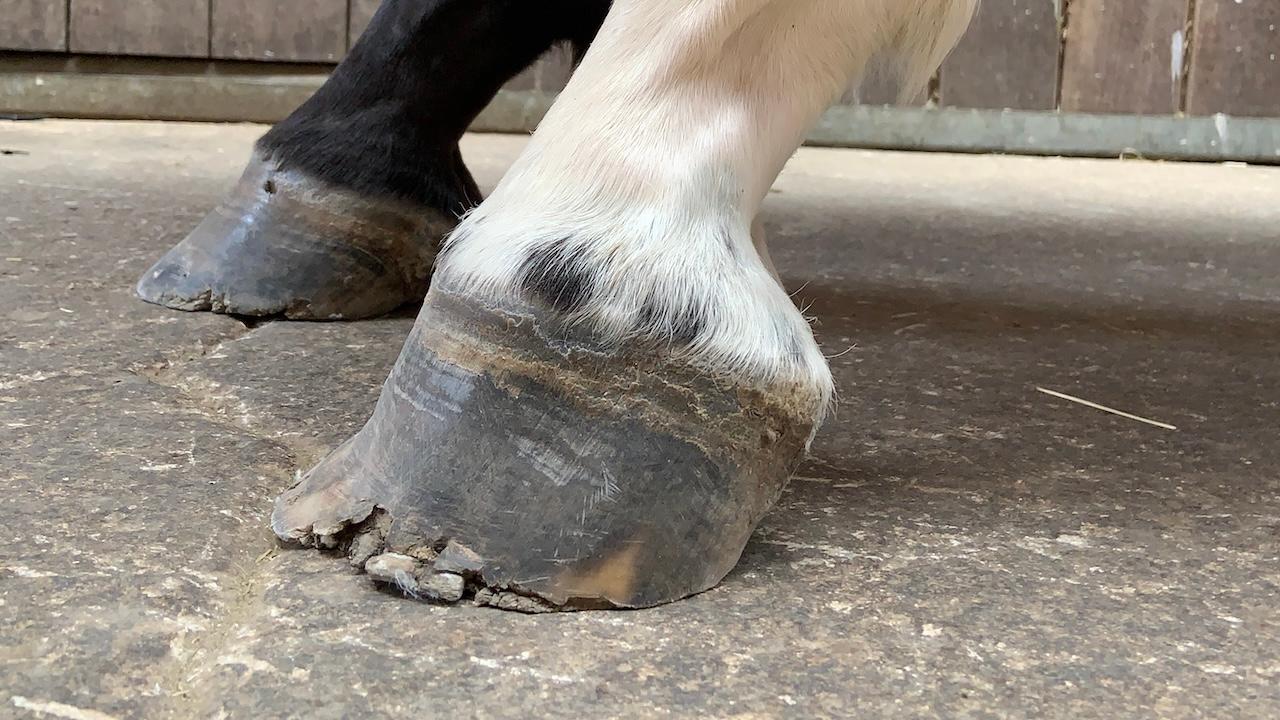24 March, 2024
Did you know that the heels of the horse's foot manifest their exact length with one or more stress points?
A proportioned foot with wear up to the level of the functional sole and which is not in a process of postural compensation, has no stress point, simply because there is no excess wall to generate back pressure from the ground.
A proportioned foot with heels that are too long because the wall has grown and had no chance of wear, shows a stress point just where the functional sole meets the heel wall. Occasionally, this stress point might not be visible to our eyes, but the forces come together at that point.
If we encounter a foot that does not comply with the natural proportions, because for some reason it is undergoing postural compensation processes, we can observe two stress points, visible on the heel wall. The first stress point is close to the hairline and corresponds to the actual heel length. Or, the exact length for that horse if it were not compensating for poor posture. This stress point usually corresponds to the frog level.
On the other hand, the second stress point corresponds to the level of the functional sole, and is the stress point resulting from the current postural compensations that the horse is making. This is the stress point that we respect by following the level of the functional sole or level 0 during trimming. Why do we respect this stress point? Because if we trim below the level of the functional sole (level -1, -2, etc.), we will be modifying the horse's posture and we would be fighting against its own compensations, which are nothing more than a defence against a greater evil.
What is the benefit of recognising stress points?
In my experience, it allows me to do a precise job on an individual basis for each horse. We know that every millimetre more or less makes a big difference, so why not work exactly?
Why do I use the golden compass?
In a proportioned foot that is not in a process of postural compensation or has not been damaged by past postural compensation, all the proportions of the foot match exactly - location of the navicular bone; location of the insertion of the deep flexor and extensor tendons; location of the rolling point; location of the tip of the third phalanx; length of the heels; and several other measurements. In these proportioned feet, after measuring the total length of the frog, the smallest proportion of the compass always coincides with the first stress point which also corresponds to the level of the functional sole. But when we find a damaged foot that does not comply with the natural proportions, we find two visible stress points. The smaller compass ratio will still coincide with the first stress point but not with the functional sole level. This indicates to me that the horse must have modified his hoof to compensate for a bad posture.
How can we help?
The person trimming the hooves will do it following the level of the functional sole and up to the corresponding stress point (second stress point), but can help the horse by rounding the heel up to the first stress point - the one closest to the hairline - and will do it with the rasp from the white line, to give the corneal capsule the possibility to free itself from the pressures it suffers from the compensatory posture. This helps to restore the position of the corneal capsule without changing the dorso-palmar balance of the foot on the ground. In a normal, healthy hoof it would be rounded only from the internal wall.
A common case is presented by clubfoot, as shown in the picture. Note the difference after considering both stress points when trimming the hoofs. Approximately one year has passed between one photo and the other.



